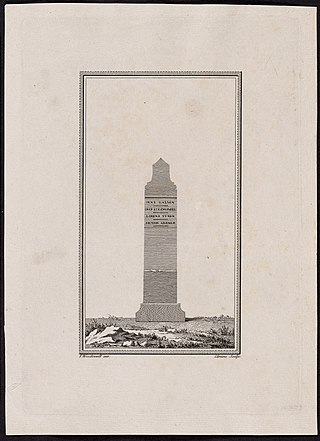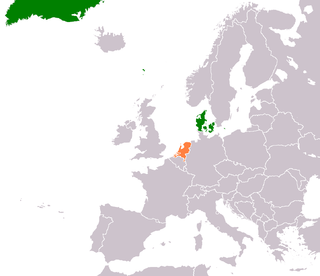Contents
| |||||
| Decades: | |||||
|---|---|---|---|---|---|
| See also: | Other events of 1659 List of years in Denmark | ||||
| |||||
| Decades: | |||||
|---|---|---|---|---|---|
| See also: | Other events of 1659 List of years in Denmark | ||||




Frederick III was King of Denmark and Norway from 1648 until his death in 1670. He also governed under the name Frederick II as diocesan administrator of the Prince-Bishopric of Verden, and the Prince-Archbishopric of Bremen (1635–45).

Brandenburg-Prussia is the historiographic denomination for the early modern realm of the Brandenburgian Hohenzollerns between 1618 and 1701. Based in the Electorate of Brandenburg, the main branch of the Hohenzollern intermarried with the branch ruling the Duchy of Prussia, and secured succession upon the latter's extinction in the male line in 1618. Another consequence of intermarriage was the incorporation of the lower Rhenish principalities of Cleves, Mark and Ravensberg after the Treaty of Xanten in 1614.

The Treaty of Roskilde was negotiated at Høje Taastrup Church and signed (NS) during the Second Northern War between Frederick III of Denmark–Norway and Karl X Gustav of Sweden in the Danish city of Roskilde. After a devastating defeat, Denmark–Norway was forced to give up a third of its territory to save the rest, the ceded lands comprising Blekinge, Bornholm, Bohuslän (Båhuslen), Scania (Skåne) and Trøndelag, as well as her claims to Halland.

The Second Northern War (1655–60), was fought between Sweden and its adversaries the Polish–Lithuanian Commonwealth (1655–60), the Tsardom of Russia (1656–58), Brandenburg-Prussia (1657–60), the Habsburg monarchy (1657–60) and Denmark–Norway. The Dutch Republic waged an informal trade war against Sweden and seized the colony of New Sweden in 1655, but was not a recognized part of the Polish–Danish alliance.

Børsen, also known as Børsbygningen, is a 17th-century stock exchange in the center of Copenhagen. The historic building is situated next to Christiansborg Palace, the seat of the Danish Parliament, on the island of Slotsholmen. Børsen, a popular tourist attraction, is most noted for its distinctive spire, shaped as the tails of four dragons twined together, reaching a height of 56 metres.

The Round Tower is a 17th-century tower in Copenhagen, Denmark, one of the many architectural projects of Christian IV of Denmark. Built as an astronomical observatory, it is noted for its equestrian staircase, a 7.5-turn helical corridor leading to the platform at the top, and its views over Copenhagen.

The Peace of Münster was a treaty between the Lords States General of the Seven United Netherlands and the Spanish Crown, the terms of which were agreed on 30 January 1648. The treaty, negotiated in parallel to, but not part of, the Peace of Westphalia, is a key event in Dutch history, marking the formal recognition of the independent Dutch Republic and the end of the Thirty Years' War and the Eighty Years' War.

The Assault on Copenhagen also known as the Battle of Copenhagen on 11 February 1659 was a major engagement during the Second Northern War, taking place during the Swedish siege of Copenhagen.

The Dano-Swedish War of 1658–1660 was a war between Denmark–Norway and Sweden, with the former backed by the Dutch Republic and Poland. It is known in Denmark as the Second Karl Gustav War, in Norway as Bjelkes Feud in Sweden as Karl Gustav's Second Danish War, and in the Netherlands as the Swedish-Dutch War.

Hans van Steenwinckel the Younger was a Flemish-Danish architect who specialised in the Dutch Renaissance style, typical of prestigious Danish buildings from the first half of the 17th century. Along with his brother Lorenz van Steenwinckel he was responsible for most of King Christian IV's many ambitious building projects.

Oluf van Steenwinckel was a Danish building master and engineer, probably the son of Hans van Steenwinckel the Younger.

Marienlyst Castle is a palatial residence located in Helsingør, Denmark. It was named after King Frederik V of Denmark's second wife, Juliana Maria, the queen consort of Denmark and Norway. The building formerly served as a royal pavilion of Kronborg Castle and was mostly used as a venue for pleasure and hunting. It was also used by the director-general of the Øresund Custom House, Colonel Adam Gottlob von Krogh and his wife Magdalene, between 1796 and 1847.
The Treaty of Elbing was signed between the Dutch Republic and the Swedish Empire on 1 September (OS) / 11 September 1656, during the Second Northern War, in Swedish-held Elbing (Elbląg). It served to protect Dutch interests in the Baltic Sea, ended the Dutch intervention in the Swedish siege of Danzig, and renewed a fragile peace between the Dutch Republic and Sweden. Within the former, there was opposition to the treaty demanding elucidations, which were agreed upon only on 29 November (OS) / 9 December 1659 in the Convention of Helsingör. Earlier in 1659, in the Concert of The Hague, England, France, and the Dutch Republic had agreed to include the treaty of Elbing in their common agenda regarding the Second Northern War.
The Concert of The Hague, signed on 21 May 1659, was an outline of the common stance of England, France and the Dutch Republic regarding the Second Northern War. The powers agreed that the Swedish Empire and Denmark–Norway should settle for a peace treaty based on the Treaty of Roskilde, including free navigation through The Sound and the Baltic Sea based on the Treaty of Elbing. The subsequent Dano-Swedish Peace of Copenhagen largely followed the terms dictated by the Concert of the Hague.

Denmark–Netherlands relations are the bilateral relations between Denmark and the Netherlands. The Netherlands has an embassy in Copenhagen and Denmark has an embassy in The Hague. Both countries are full members of the Council of Europe, the European Union and NATO. Princess Beatrix is a Dame of the Order of the Elephant since 29 October 1975. On 31 January 1998, King Willem-Alexander of the Netherlands also received the Order of the Elephant.
Events from the year 1700 in Denmark.
Events from the year 1658 in Denmark.

Hendrik Carloff, Caerloff or Caarlof was an adventurer and slave trader active in the 17th century. Carloff began his career as a cabin boy but rose to become a commander and governor appointed by the Dutch West India Company and Danish or the Swedish Africa Company on the Gold Coast. Between 1676 and 1677, he was Governor of Tobago.

Hans Rostgaard was a Danish bailiff (ridefoged) and county administrator (amtsforvalter) at Helsingør who is remembered for his achievement in the Second Northern War and especially his role during the Swedish siege of Copenhagen and subsequent assault on the city in 1659. He is also associated with Krogerup Manor in Humlebæk where a statue of him by Hans Peder Pedersen-Dan was installed in 1904. He was the father of Frederik Rostgaard and the uncle of Jens Rostgaard.

Bishop Henrik Gerner was a Dane who studied theology and travelled extensively in England. From 1656, at the age of 27, he became parish priest for Birkerød and in 1693 until his death was appointed bishop of Viborg.